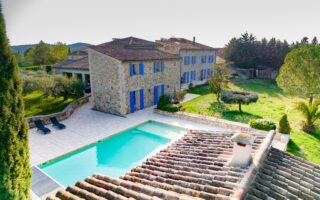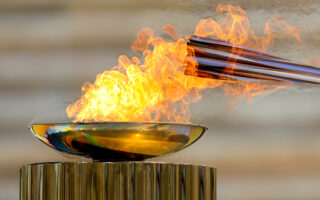France’s Famous Spa Towns: From Roman Baths to Alpine Resorts
Feature
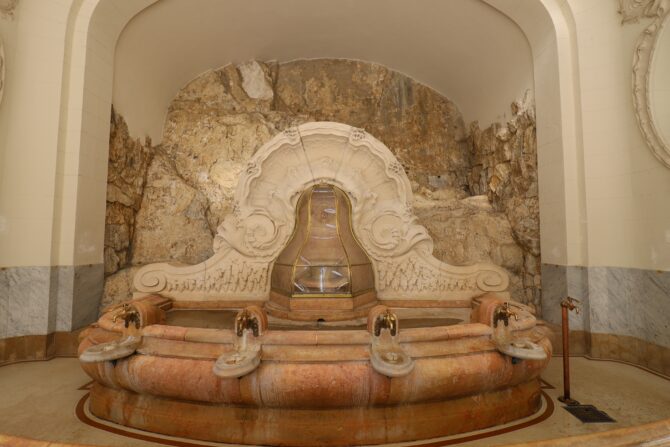
When Julius Caesar took to the waters in Vichy, little did he suspect that some 2000 years later, Vichy would become a landmark when, in July 2021, UNESCO added this French spa town to its prestigious World Heritage List alongside other great spa towns of Europe.
Roman roots
It is no secret that the Romans were creatures of comfort and sought out, across their empire, warm sources of water rich in minerals such as potassium, magnesium, and sulfur to soothe their bodies and their minds as well. Being the superb engineers that they were, they built outstanding facilities, some of which have withstood the test of time. Most thermal bath towns, such as Vichy, then known as Vicus Calidus, still stand on their original Roman foundations.
Not only did they drink the gushing spring water laced with the precious minerals as an aid to better health, but the Romans also enjoyed the restorative virtues of bathing, whether the water was hot (calidarium), cold (frigidarium), or tepid (tepidarium). These waters were already reputed to break up kidney stones or ease digestion when not soothing skin diseases, aches, and pains. The Romans cherished their hedonistic lifestyle and the downtime devoted to relaxing and socializing, thanks to thermal baths. Furthermore, Roman legionnaires benefitted from the therapeutic practice of bathing, which enabled them to recuperate from wounds sustained in battle.
From medieval times to the Belle Epoque boom
During the Middle Ages and up until the late Renaissance, thermal baths fell out of favor. The spread of Christianity, with its dire teachings that anything enjoyable was the work of the devil, was probably one of the main factors. In the mid-nineteenth century, several medical studies were published in France, and “le recours aux eaux” (the recourse of taking to the waters) was widely prescribed. The word “cure” soon became a household word and French “curistes” flocked to Vichy, a haven for those on home leave from colonies in Africa and Asia, seeking treatment for a variety of afflictions.
Between 1871 and 1880, spa towns experienced their golden age with the advent of the Belle Epoque. Vichy was entering a new era with the dawn of lavish establishments and an elitist clientele thanks to Napoleon III, who turned it into the “place to be”. The springs in this small town north of Clermont-Ferrand in the Auvergne, known for their high content of bicarbonate of soda, were now attracting some 300,000 “curistes” yearly, mainly suffering from intestinal disorders and their punishing side effects.
It soon became famous not only for its waters but also for its opera house, grand hotels, golf course, and racetrack, together with an impressive 350 acres of manicured parkland. An added attraction came about when a law authorized casinos to operate in spa towns. The Belle Epoque was a period of optimism, peace, and prosperity, and people had but one wish on their minds: to be entertained. Aristocrats from all over Europe, together with well-to-do families, flocked to this Eden in search of a newly-found joie de vivre, they thought they would never experience.
Days at the spa were regimented. Men and women congregated in the morning to the “gryphons” or spigots, from which the drinking water came gushing. They filled their glasses and sipped the precious drink under medical supervision. Afternoons were devoted to bathing in segregated pools. Men had their quarters, while women, with their maids and nannies to help out with the children, took to the waters to enjoy a relaxing afternoon. After dinner came the much-awaited evenings when, clad in all their finery, men and women would attend splendid balls, the opera, and the highly prized attraction: the casino.
Soon enough, spa towns attracted not only nobility from all over Europe but also a cohort of gigolos and paramours. It is said that “le beau monde” mingled with le “demi-monde” mainly composed of “mondaines”, a collection of socialites called “spiders”, in search of romance with wealthy men. Vichy became a magnet for a hodgepodge of patients in need of a curative soak, together with thrill-seekers and gamblers of all stripes. Spas were rife with intrigue, deceit, and broken hearts. But genuine love stories did happen. During one of his stays in Aix-les-Bains, the very rich and famous Sultan Muhammad Aga Khan III met with Josephine Carron. It was love at first sight, and the Sultan married her (his third wife) in December 1929 at the local mairie.
Vichy’s success story was such an inspiring one that spa towns across France soon sprouted like mushrooms, especially in mountain retreats where water is abundant. In order to draw high society to their towns, the builders outdid one another in erecting establishments that reflected the newfound wealth of their patrons. The décor, a mix of imperial grandeur and byzantine accents, was meant to impress. Glass domes of epic proportions meant to garner maximum light, lofty ceilings, imposing columns, and bejeweled walls not to mention grand staircases can still be admired at Mont-Dore and Bourdon-l’Archambault, in the Auvergne, Luxueil-les-Bains near the Swiss border, and Saint-Honoré-les-Bains in the Bourgogne, Franche-Comté region.
Meanwhile, towns that were already known to the Romans, such as Luchon, Bagnières-de-Bigorre and Cauterets in the Pyrénées, and Evian in the Alps, underwent their own revival and also offered state-of-the-art facilities with grand hotels amid lush parkland. Contrexéville in the Vosges became very famous when its source was discovered in the 18th century by the court physician of Stanislas, Duke of Lorraine, king of Poland and stepfather to Louis XV. Today, many fashionable women come to take part in a ten-day slimming program, which includes jogging and aerobics while drinking up to two and a half liters of Contrexéville per day.
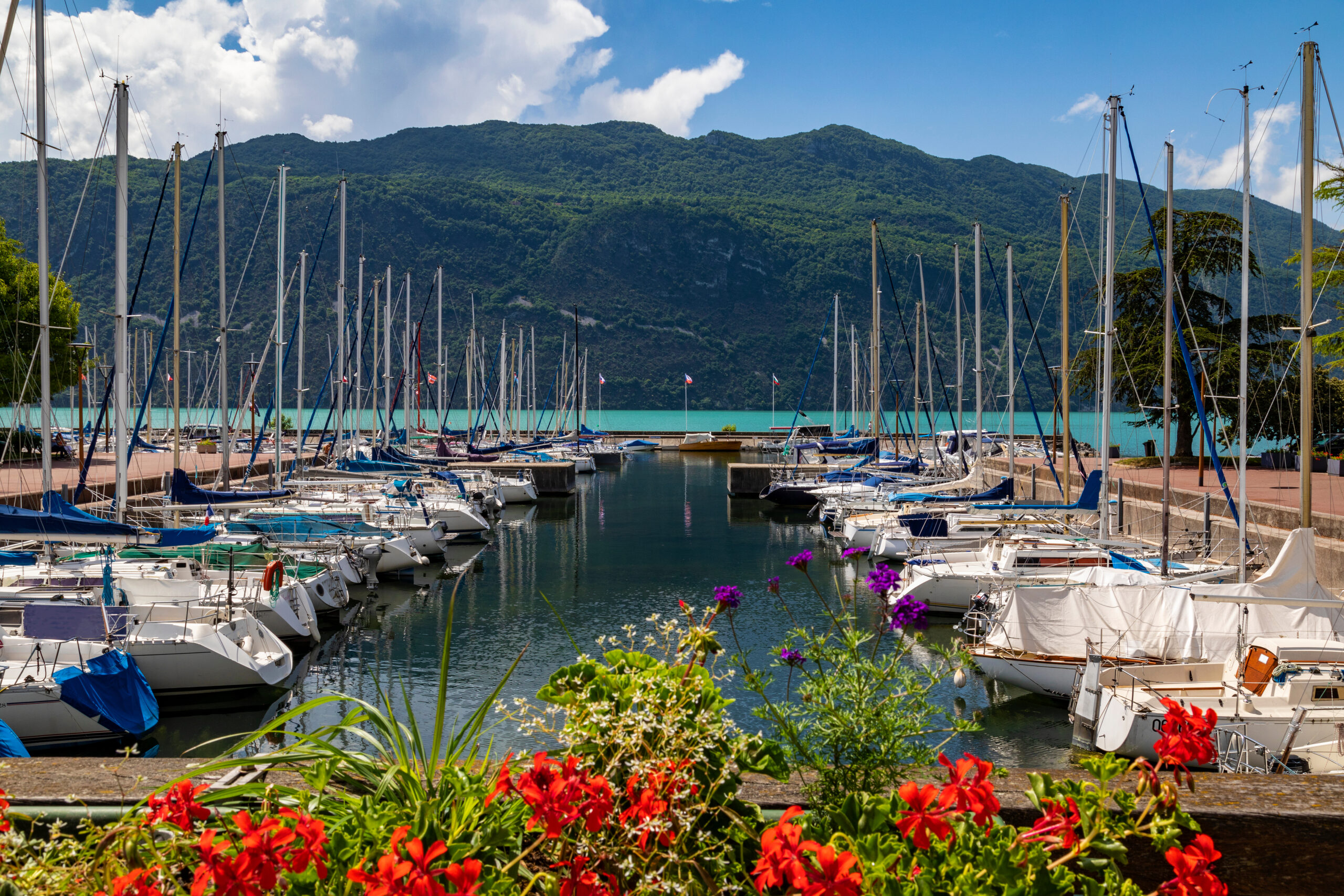
The Grand Port in Aix-les-Bains
Alpine spa escapes
The success story of the spa towns owes much to the advent of the railroad, as it allowed those far-away towns nestled at the foot of the Pyrénées and the Alps to flourish.
Travel was no longer a burden as trains crisscrossed the nation and gave easy access to these pleasurable destinations. Advertising soon appeared, and train companies outsmarted each other with elegant and colorful posters plastered on walls in cities and stations, often depicting elegantly dressed or semi-dressed women enjoying a life of leisure, a promise of an unforgettable sojourn. Spa towns multiplied, and every water source became a gold mine.
Today, “stations thermales” can be found in many regions of France. But, apart from Vichy and Evian in the Haute-Savoie, three other spa towns truly distinguish themselves. Dax in the Landes, La Roche-Posay in the Vienne, and Aix-les-Bains in the Savoie. Dax, famous for its warm water spring, is famous for its mud treatments to fight rheumatism. La Roche-Posay sells its skincare products all over the world, while Aix-les-Bains in Savoie, dating back to 120 BC, remains a top tourist destination.
Found nestled between the Lac du Bourget and the mountains, Aquae (Latin for water), its former name, is now known as the Alpine Riviera. Roman ruins are still visible throughout the town, and one can visit the very sophisticated vestiges of its underground Roman baths. But Aix-les-Bains, above all, benefitted from a very famous guest. Following her daughter Beatrice’s advice, Queen Victoria travelled to Aix-les-Bains by train with a retenue of 40 to 60 servants. Although she never took to the waters herself, Victoria enjoyed the climate and the sites. It was thanks to her patronage that Aix-les-Bains became the top watering spot for royalty from all over the world.
Two world wars and a major international recession marked the end of the ultra-luxurious spa experience. In 1939, France introduced social security, and spas dropped their elite clientele for a more modest one. Gone were the balls and the grand soirées, but the casinos remained as popular as ever and are still thriving. Today, the new drawcard centers around health and fitness, and “la médecine douce” (alternative medicine) is now widely accepted by the French.
Doctors can prescribe “taking to the waters” to patients suffering from a variety of ailments such as kidney stones, digestive ailments, rheumatism, and skin problems. The clientele is mainly made up of retirees, but young families are attracted by a bevy of activities aside from the treatments. Golf, tennis, hiking in the hills, swimming in Lac du Bourget, or simply taking a relaxing afternoon visiting the sights, there is something for everyone and every purse.
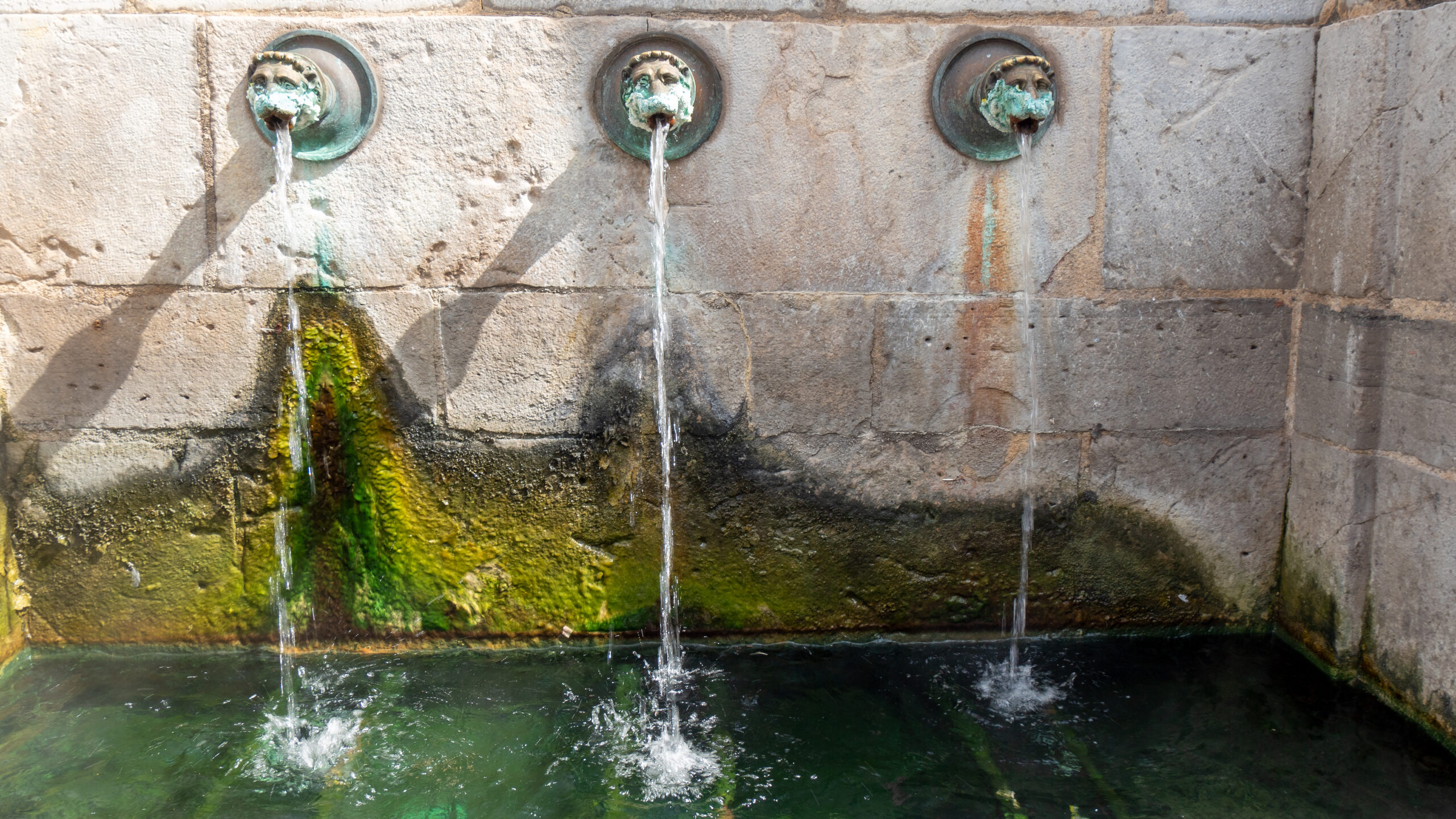
The hot springs of Dax.
France’s famous spa towns today
There are 89 stations thermales in France comprising 109 establishments. It is the third thermal country after Germany and Italy. The industry was severely impacted by Covid, but the yearly 600,000 or so “curistes” are slowly coming back. Statistics are still not available for 2023, but according to the CNETH (Conseil National des Etablissements Thermaux), there were 437,000 “curistes” in 2022. Over 90% of the French view thermalism as a gentle way to cure several ills with the added bonus of avoiding medication.
Today’s spa towns are open to anyone who wishes to feel pampered. However, the largest clientele of “curistes” is still composed of retirees who are sent there by their doctor. Their stay, which is usually a 3-week long affair, is paid for, in large part, by the state. Thanks to this benevolent policy, spa towns remain a success story, employing 100,000 people directly and indirectly.
Thermalism should not be confused with thalassotherapy, which comes from the Greek word Thalassa, which means sea. This type of aquatic therapy refers to a variety of treatments aimed at cleansing the skin and toning the muscles in a pool of saltwater. Thalassotherapy is a popular alternative to spa treatments and can be found in France, mainly along the Atlantic coast.
Balneotherapy, is a method of treatment available in spas that involves immersion in hot or cold pools of mineral water, which are equipped with strong jets that massage the muscles. It is known to help heal a variety of ailments, such as eczema and rheumatoid arthritis.
For many years now, the word “spa” has become a kind of misnomer. The city of Spa, located in Belgium in the province of Liège, whose name became an eponym for mineral baths, is now on everyone’s lips. These days, the word spa is used indiscriminately to describe any location where one can go for massages and beauty treatments, mostly in resorts connected to famous skincare brands.
There still remains a general consensus in France that thermalism is good for the body as well as the mind. Regardless of the lack of scientific evidence proving their efficacy, water-based therapies provide nevertheless a positive and pleasurable experience. It is also a known fact that patients who cannot exercise on land can easily exercise in water. For those who swear by its benefits, spas can boast of a solid reputation for healing and relaxing at the same time.
French spa towns, as well as other spa towns throughout Europe, remain unique for the quality of their waters, the treatments they offer, and their exceptional cultural heritage. Needless to say, thermalism has had a huge impact on the infrastructure of these spa towns, their remarkable architecture, and their thriving economy. Even for the non-initiated, spa towns deserve to be discovered.
Read more…
Lead photo credit : Source des Célestins in Vichy.
Share to: Facebook Twitter LinkedIn Email
By Denyse Betts
Leave a reply
Your email address will not be published. Required fields are marked *


